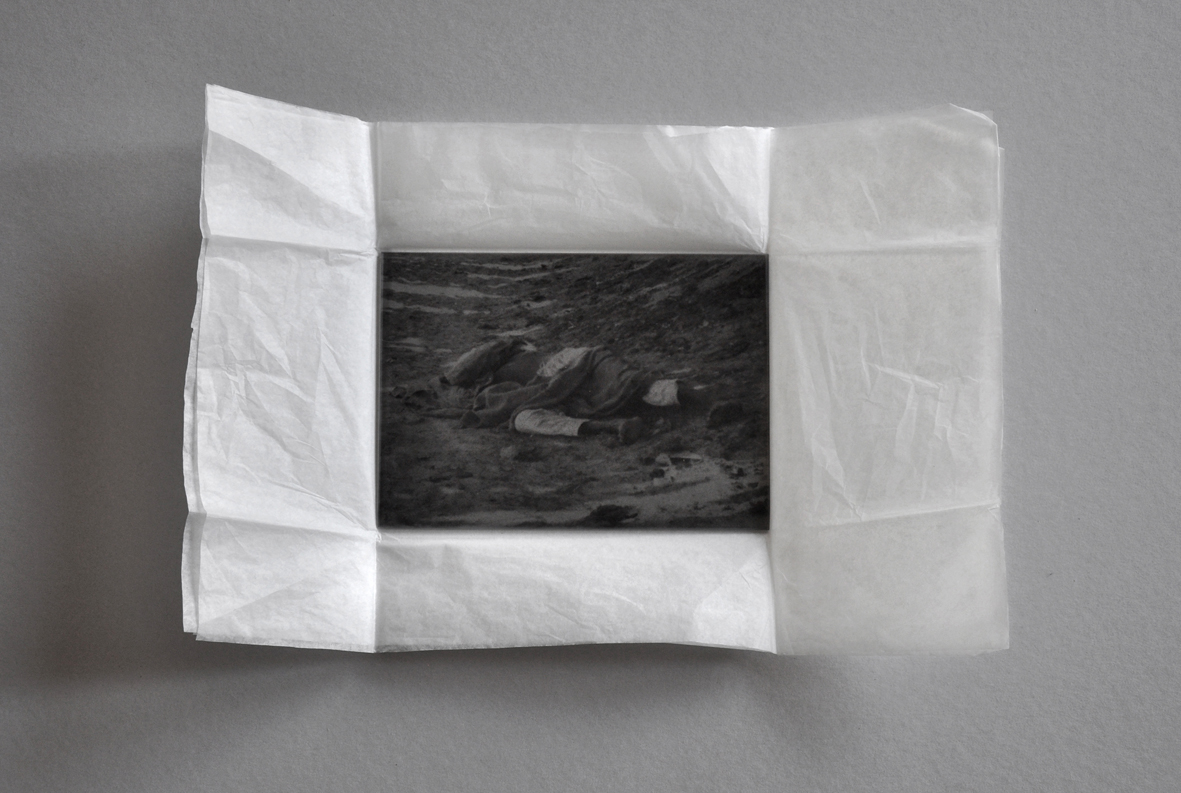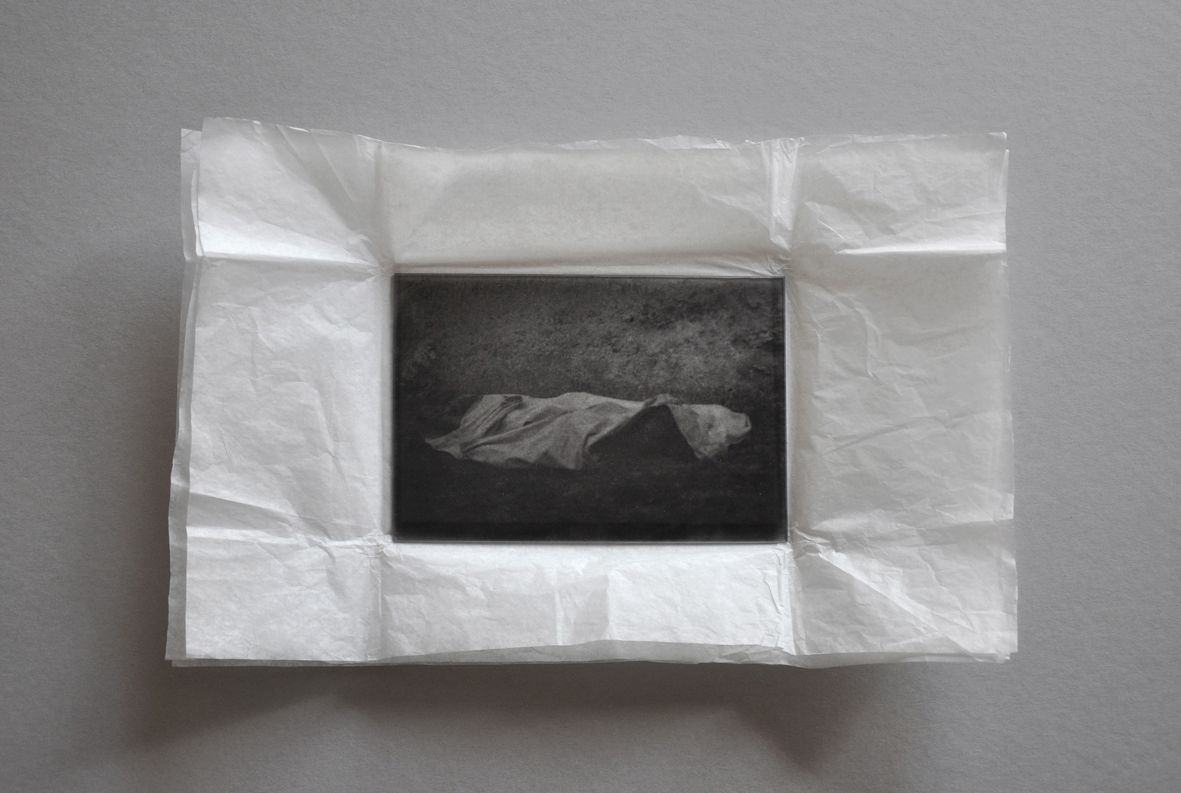Agnés Geoffray
Les gisants (2015)
Agnés Geoffray

The corpus of images at the origin of this work is the archive of reporter Gaston Chérau that was sent to Tripoli in 1911 to document the colonial war between the then Italian kingdom and Ottoman empire, in the territory of what is now Libya.
The archive was rediscovered thanks to a research project of the art historian Pierre Schill that in 2014 invited a group of writers and artists (visual artists, dancers, choreographers) to activate and recontextualize the archival material.
Agnés Geoffray’s attention was drawn to the photographs depicting victims: mostly fallen, unidentified soldiers from both sides of the conflict. Often these lying bodies are not even the subjects of the images, but they are mere figures in the background.
Her intervention consists on cropping, enlarging and reprinting each victim alone on glass plates; then display the glass plates wrapped in silk paper, commonly used for the conservation of fragile photographs.

There are several ideas at play here: there’s the performative act of protecting the photograph-object by wrapping it in paper, recognising its fragility (which is amplified by the decision to use a fragile material, glass plate, as support). There’s also the effort to rehabilitate the fallen soldiers from the collective status of victims to separate individuals.
This interventions betrays the ambivalence in the representation of violence that is central in Agnés Geoffray´s research: reframing the victim amplifies the violence of the image once again. Instead of a mass of victims of the conflict, the spectator is now confronted with considering the horror of every individual death.
At the same time there’s the caring intention of restoring the visibility of the individuals fallen during the conflict, amplified by the physical, performative act of wrapping them carefully in paper - a symbolic form of burial.
This idea of symbolic burial is echoed by the choice of displaying the photographs on a table very low and close to the ground, that forces the viewer to kneel beside them, to touch the photograph-object, unwrapping it to be able to access it. Touching history with one´s own hands, and participating in the secondary symbolic burial process by rewrapping each photograph after viewing it.

Photo credit: Agnés Geoffray
︎ See this work on the artist´s website